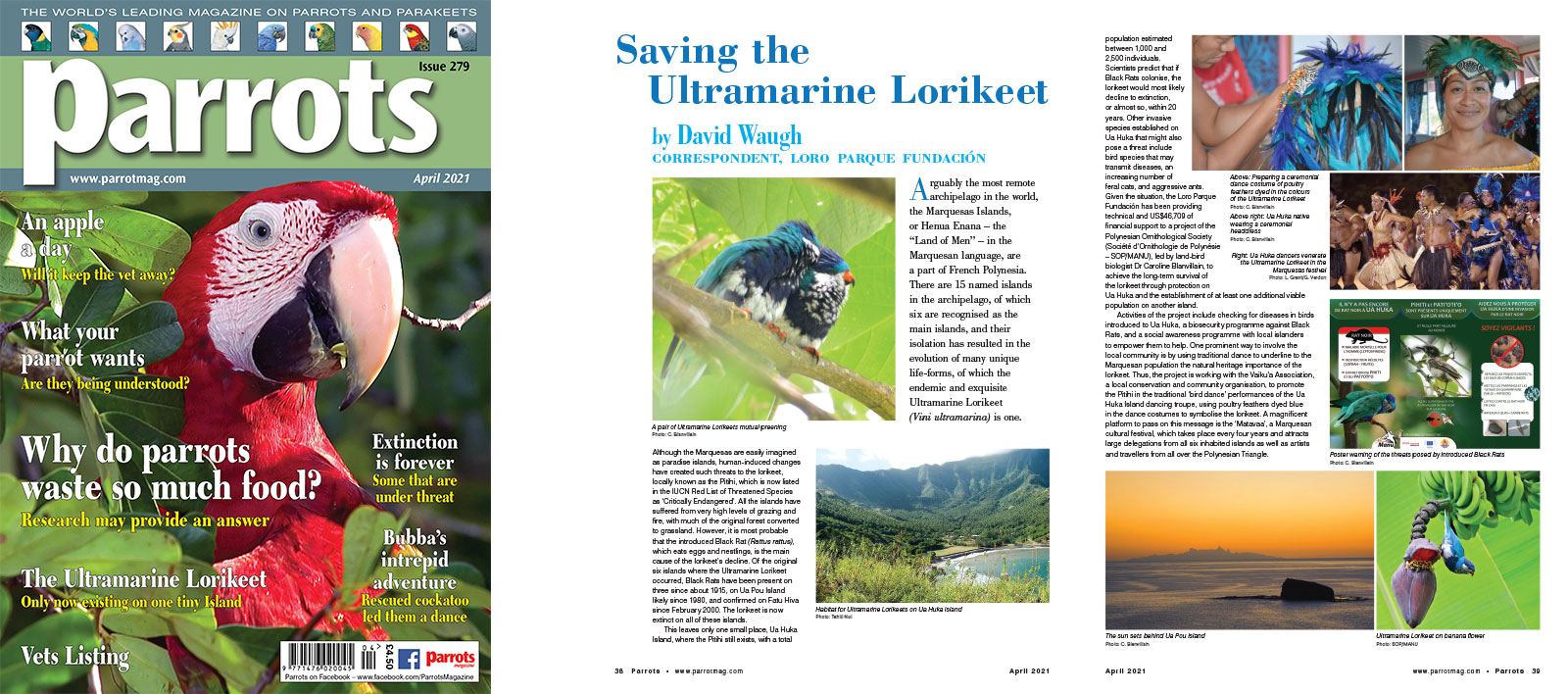
By David Waugh, Correspondent, Loro Parque Fundación
Arguably the most remote archipelago in the world, the Marquesas Islands, or Henua Enana – the “Land of Men” – in the Marquesan language, are a part of French Polynesia. There are 15 named islands in the archipelago, of which six are recognised as the main islands, and their isolation has resulted in the evolution of many unique life-forms, of which the endemic and exquisite Ultramarine Lorikeet (Vini ultramarina) is one.
Although the Marquesas are easily imagined as paradise islands, human-induced changes have created such threats to the lorikeet, locally known as the Pitihi, which is now listed in the IUCN Red List of Threatened Species as ‘Critically Endangered’. All the islands have suffered from very high levels of grazing and fire, with much of the original forest converted to grassland. However, it is most probable that the introduced Black Rat (Rattus rattus), which eats eggs and nestlings, is the main cause of the lorikeet’s decline. Of the original six islands where the Ultramarine Lorikeet occurred, Black Rats have been present on three since about 1915, on Ua Pou Island likely since 1980, and confirmed on Fatu Hiva since February 2000. The lorikeet is now extinct on all of these islands.
This leaves only one small place, Ua Huka Island, where the Pitihi still exists, with a total population estimated between 1,000 and 2,500 individuals.
